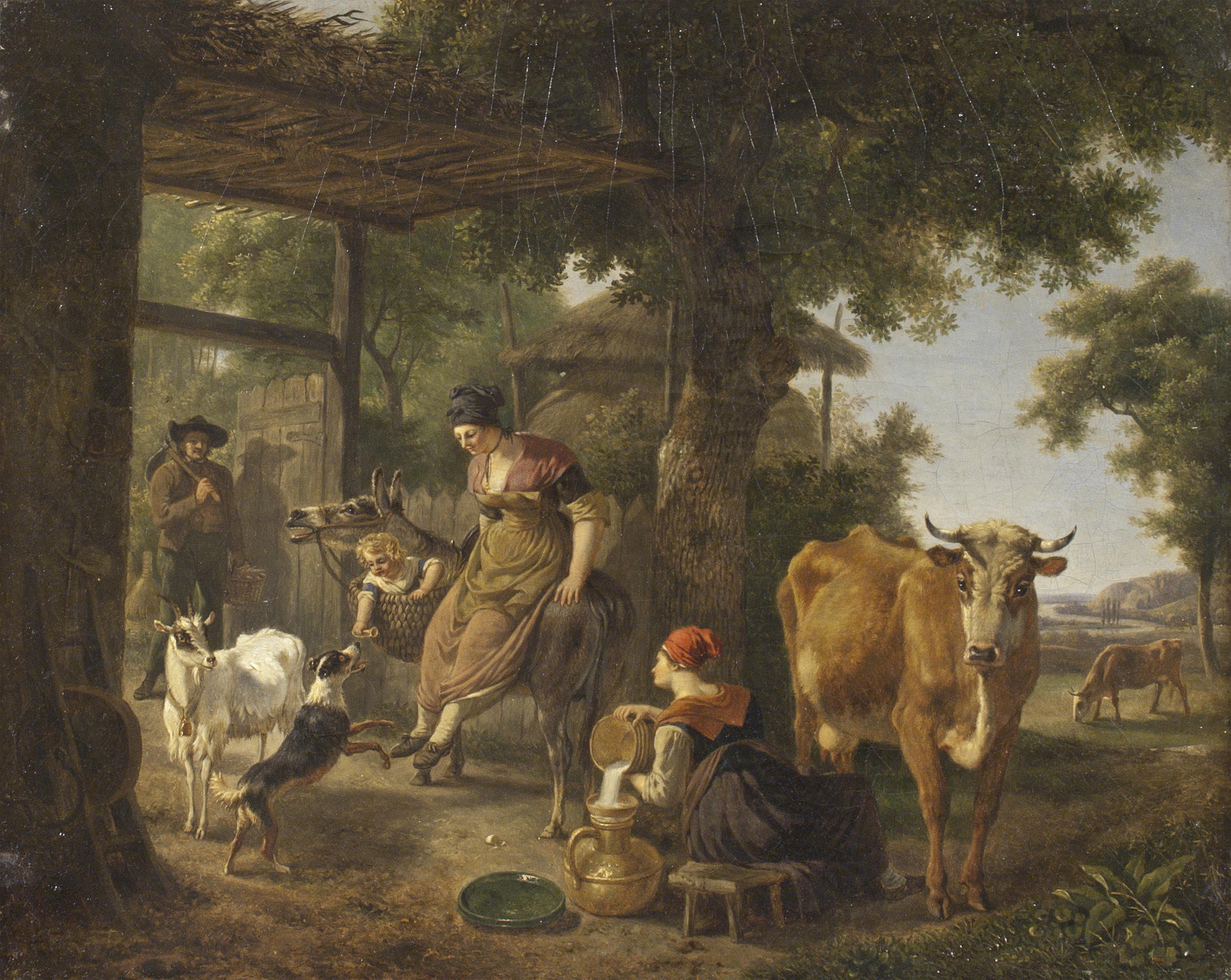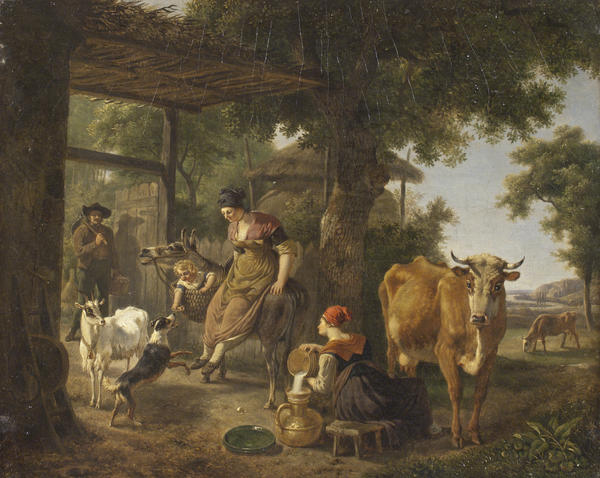This work was acquired in 1857 by Zinaida Ivanovna Yusupova from the Saint Petersburg antique dealer Palazzi. Until 1924, it belonged to princes Yusupov’s collection. Jean Louis Demarne was one of the most popular painters of the 18th century. He studied in Paris, in the workshop of Gustav Briard. From 1783 to 1827, he exhibited his works at the Salon.
He painted landscapes with animals, village fairs, and seaside views in the spirit of Dutch and Flemish masters, who were very popular among the eighteenth century collectors. His genre scenes are in part painted from life, but they are all colored by the artist’s imagination. It is difficult to imagine Jean Louis Demarne’s paintings in large format.
His perception of the reality enabled him to capture everyday scenes without overindulging in expressive effects. He loved to paint cozy spaces with warm and soft lighting. Although Jean Louis Demarne imitated the Lesser Dutchmen of the 17th century, he lived in the Rococo era, and its gallant style was reflected in his art. Scenes from rural life that the artist loved to paint are not too serious; they are always somewhat theatrical.
Peasant’s gestures are a little affected, as if they were playing a performance. Art lovers appreciated Demarne’s attention to detail and finishing that gave the impression of high-quality painting. For some of them, certain superficiality in the experience and perception of life was another attractive feature of Jean Louis Demarne’s art. Physical and chemical studies of the painting showed that the artist used factory-made paints of his time, and nevertheless tried to follow the technology of old-style painting and to create the effect of translucent glazing with semi-transparent upper layers of paints. The basic gray tone of the canvas primed with white lead is involved in the optical structure of painting.
Light tone affects halftones and shadows, makes the thin paint coating and glazing look brighter, and enhances the intensity of the blue tone in the sky, turning it into gray-blue. A comprehensive study of the canvas revealed specific features of the master’s pictorial method. The methods of conveying forms with light-and-dark, as well as special color scheme indicate that the painting dates from the first decade of the 19th century.



